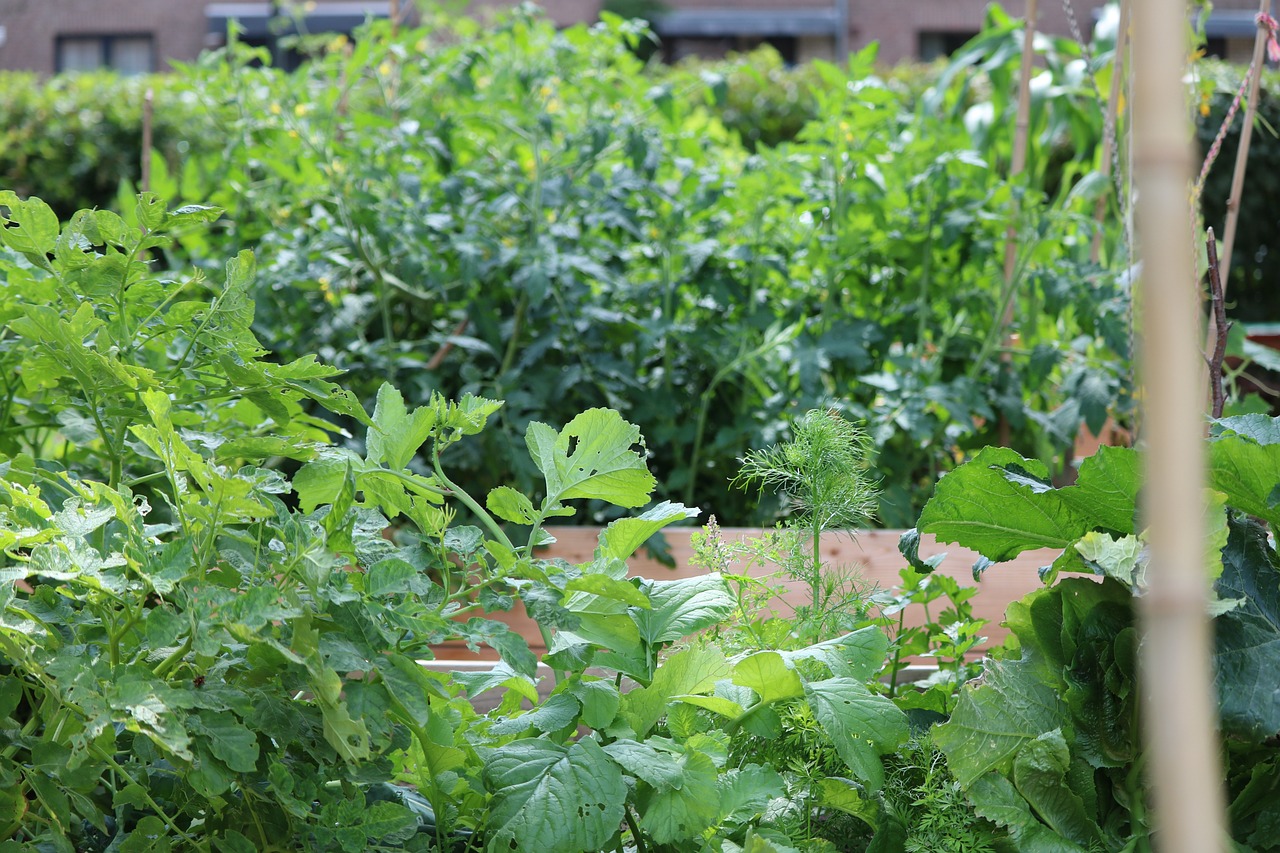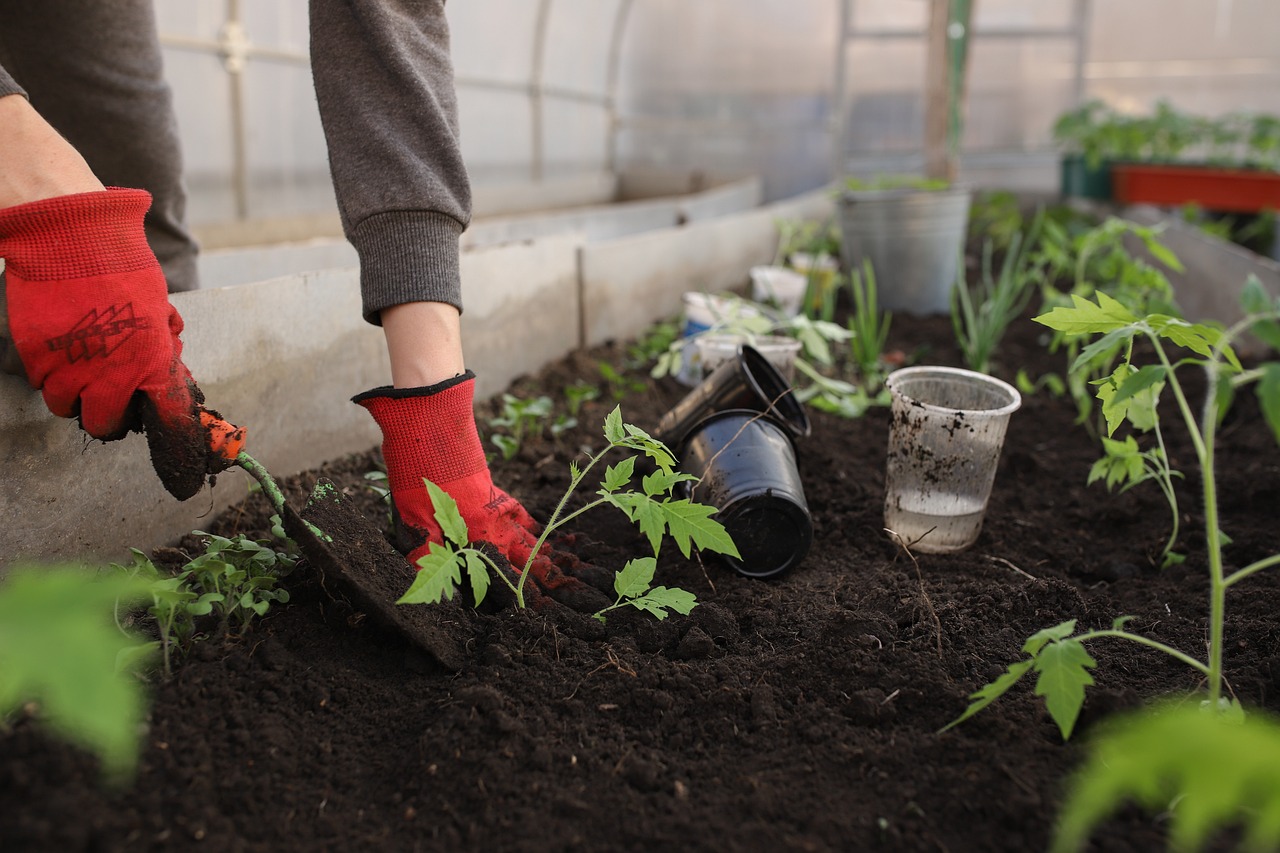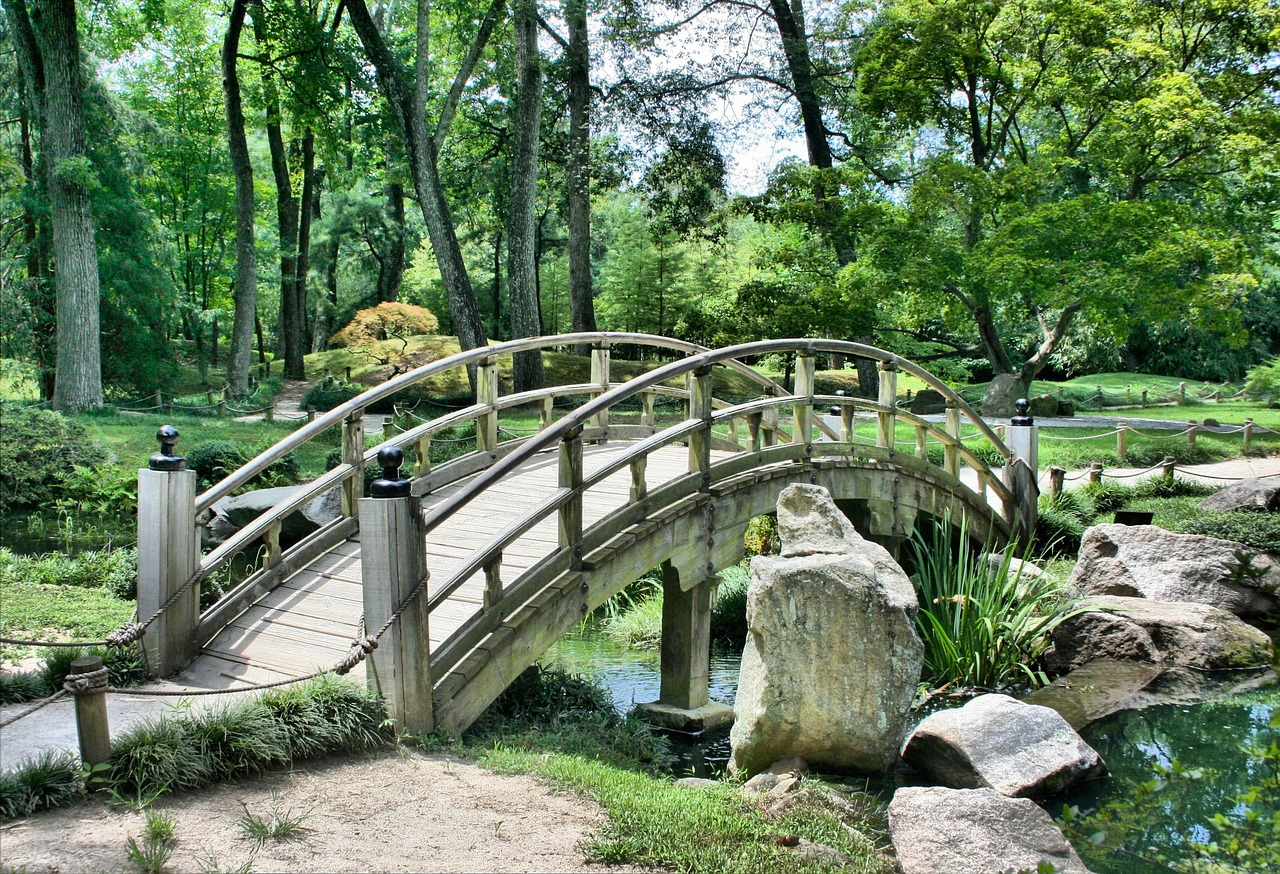How to Create a Raised Garden Bed with Recycled Materials
Are you ready to embark on a gardening journey that not only benefits your plants but also the environment? Let's dive into the world of creating a raised garden bed with recycled materials. This sustainable approach not only allows you to flex your creativity but also contributes to reducing waste and promoting eco-friendly practices.
Imagine transforming discarded items like old wooden pallets, bricks, or concrete blocks into a beautiful garden space teeming with life. By repurposing these materials, you not only save money but also give them a new purpose, adding a touch of uniqueness to your outdoor oasis.
Building a raised garden bed with recycled materials is a rewarding experience that combines resourcefulness with a green thumb. From selecting the right location to filling it with nourishing soil, every step in this process is an opportunity to connect with nature and showcase your DIY skills.
As you embark on this journey, consider the endless possibilities that recycled materials offer. Each piece has a story to tell, adding character and charm to your garden bed. Embrace the imperfections and quirks of these materials, turning them into features that set your garden apart.

Benefits of Raised Garden Beds
Raised garden beds offer a multitude of benefits that make them a popular choice for gardeners of all levels. One of the key advantages is the improved soil drainage they provide. By elevating the planting area, excess water can easily drain away, preventing waterlogging and root rot in your plants.
Another significant benefit is better pest control. Raised garden beds make it easier to monitor and protect your plants from pests and critters that may damage your crops. Additionally, the raised height of the beds offers easier access for planting, weeding, and harvesting, reducing strain on your back and knees.
Furthermore, raised garden beds create a more organized and visually appealing gardening space. They help define the boundaries of your garden, making it easier to separate different plants and maintain a tidy layout. This structured approach not only enhances the aesthetic appeal of your garden but also improves overall garden management.

Choosing the Right Recycled Materials
When it comes to creating a raised garden bed with recycled materials, choosing the right components is crucial for the success and sustainability of your project. Not all recycled materials are suitable for constructing garden beds, so it's essential to select options that are durable, safe for your plants, and easily accessible in your area. Let's explore some of the most common recycled materials that can be repurposed for building raised garden beds.
One popular choice for constructing raised garden beds is old wooden pallets. These versatile materials can be easily transformed into sturdy frames for your garden bed. However, it's important to ensure that the pallets are untreated or have been safely repurposed to avoid any harmful chemicals leaching into the soil and affecting your plants.
Bricks are another excellent option for building raised garden beds. They provide a solid and long-lasting structure that can withstand the elements. Additionally, bricks offer a classic and timeless look to your garden bed, adding a touch of elegance to your outdoor space.
Concrete blocks are also commonly used for constructing raised garden beds due to their durability and stability. These blocks are easy to stack and arrange, allowing you to create custom shapes and sizes for your garden bed. Just make sure to source recycled concrete blocks to maintain the eco-friendly aspect of your project.
For a more unconventional choice, discarded tires can be repurposed as raised garden bed containers. Tires are durable, flexible, and provide excellent insulation for your plants. By painting or decorating the tires, you can add a pop of color and creativity to your garden while reducing waste in the environment.
Before selecting the recycled materials for your raised garden bed, consider factors such as the availability of the materials, their environmental impact, and how well they align with the aesthetic you want to achieve in your garden. By choosing the right recycled materials, you can create a sustainable and visually appealing raised garden bed that benefits both your plants and the environment.

Preparing the Site for Your Garden Bed
Preparing the site for your garden bed is a crucial step in ensuring the success of your gardening venture. Before diving into the construction process, take a moment to assess the location where your raised garden bed will be situated. Consider factors such as sunlight exposure, water drainage, and accessibility to your home. Ideally, you want a spot that receives ample sunlight throughout the day, has good water drainage to prevent waterlogging, and is easily reachable for maintenance.
Once you've identified the perfect location, clear the area of any debris, rocks, or weeds that may impede the growth of your plants. Level the ground to create a flat surface for your garden bed frame. This will help ensure stability and uniformity in your raised bed structure. You may also want to consider installing a weed barrier at the bottom of the bed to prevent weed growth and protect your plants from competing for nutrients.
Take into account the proximity of your garden bed to a water source for easy irrigation. If the area is too far from a water supply, consider setting up a rainwater harvesting system to collect and store rainwater for watering your plants. Additionally, think about the convenience of access to tools and gardening supplies from your home to make maintenance tasks more manageable.
Lastly, think about the aesthetic appeal of your garden bed site. You can enhance the visual appeal by adding decorative elements such as border plants, pathway stones, or trellises. Creating a welcoming and visually pleasing environment around your raised garden bed can elevate the overall gardening experience and make it a more enjoyable space to spend time in.

Building the Frame of the Garden Bed
When it comes to building the frame of your raised garden bed, the possibilities are as vast as your imagination. Using recycled materials not only adds a unique touch to your garden but also contributes to a sustainable environment. Imagine crafting a sturdy frame out of weathered wooden pallets, giving your garden bed a rustic charm that complements the natural beauty of your plants.
Alternatively, you could opt for a more industrial look by repurposing concrete blocks or bricks to create a durable and long-lasting frame. These materials not only provide structural integrity to your garden bed but also offer a modern aesthetic that can enhance the overall appeal of your garden space.
Consider the design and layout of your garden bed frame carefully, ensuring that it is both functional and visually pleasing. Whether you choose a simple rectangular shape or a more intricate tiered design, make sure the frame is level and secure to support the weight of the soil and plants.
As you assemble the frame, think of it as the foundation of your garden bed – much like the frame of a house supports the structure, the frame of your garden bed will provide the framework for your plants to thrive. Take your time to measure and align the recycled materials properly, creating a solid base for your gardening endeavors.
Remember, building the frame of your raised garden bed is not just about construction; it's about creating a canvas for nature to paint its vibrant colors. Embrace the process of transforming discarded materials into a beautiful and functional garden bed, where flowers bloom, vegetables flourish, and creativity blossoms.

Filling Your Garden Bed with Soil
When it comes to filling your garden bed with soil, the type of soil you choose plays a crucial role in the success of your plants. Opting for a high-quality soil mixture is essential to create a healthy growing environment and provide the necessary nutrients for your plants to thrive. Consider a blend of topsoil, compost, and organic matter to ensure proper drainage and nutrient retention in your raised garden bed.
Before filling your garden bed with soil, it's important to assess the depth required for the roots of the plants you intend to grow. Different plants have varying root depths, so tailor the soil depth accordingly to accommodate their growth. Additionally, consider the water retention capacity of the soil mixture to prevent overwatering or underwatering your plants.
If you're looking to enhance the fertility of your soil and promote optimal plant growth, incorporating organic amendments such as compost, aged manure, or worm castings can significantly benefit your raised garden bed. These natural additives enrich the soil with essential nutrients and improve its structure, creating a conducive environment for plant roots to develop and thrive.
When filling your garden bed with soil, ensure proper compaction to prevent settling and sinking over time. Lightly tamp down the soil layers as you fill the bed to eliminate air pockets and create a stable foundation for your plants. Consider creating raised mounds or ridges within the bed to accommodate plants with different spacing requirements and promote efficient water distribution.
Remember that the soil in your raised garden bed will play a vital role in supporting the growth of your plants throughout the gardening season. Regularly monitor the soil moisture levels, nutrient content, and overall health of your plants to make any necessary adjustments and ensure a bountiful harvest from your eco-friendly garden bed.

Planting and Maintaining Your Garden
Planting and maintaining your garden is a crucial aspect of ensuring a flourishing and bountiful harvest. Selecting the right plants for your raised garden bed is like choosing the perfect ingredients for a recipe; each plant plays a vital role in the overall aesthetic and productivity of your garden. Consider factors such as sunlight requirements, plant height, and compatibility when planning your garden layout. By arranging your plants thoughtfully, you can create a visually appealing and harmonious space that maximizes growth potential.
Once your plants are in place, regular maintenance is key to their health and vitality. Watering is essential, but finding the right balance can be tricky. Overwatering can lead to root rot, while underwatering can cause stress and stunted growth. Mulching around your plants helps retain moisture, suppress weeds, and regulate soil temperature. Additionally, fertilizing your garden bed with organic matter or compost provides essential nutrients for plant growth and overall soil health.
Monitoring your garden for pests and diseases is also crucial in maintaining a thriving ecosystem. Keep an eye out for common garden pests like aphids, snails, or caterpillars, and take appropriate measures to control infestations. Implementing natural pest control methods, such as companion planting or introducing beneficial insects, can help protect your plants without harmful chemicals.
Regularly inspecting your plants for signs of nutrient deficiencies or diseases allows for early intervention, preventing issues from escalating and affecting the entire garden. By staying proactive and attentive to your garden's needs, you can create a vibrant and sustainable growing environment that rewards you with a bounty of fresh produce and beautiful blooms.

Managing Watering and Drainage
Managing watering and drainage in your raised garden bed is crucial for the health and vitality of your plants. Properly balancing water distribution and drainage can mean the difference between a flourishing garden and one struggling to survive. When it comes to watering, consistency is key. Your plants need a steady supply of moisture, but overwatering can lead to root rot and other issues. On the other hand, underwatering can result in wilting and stunted growth. Finding the right balance is essential.
One effective way to manage watering is by installing a drip irrigation system in your raised garden bed. This system delivers water directly to the roots of your plants, ensuring they receive an adequate amount without wastage. Additionally, mulching around your plants can help retain moisture in the soil, reducing the frequency of watering needed. Mulch acts as a protective barrier, preventing water evaporation and keeping the soil cool.
When it comes to drainage, ensuring proper water flow is essential to prevent waterlogging, which can suffocate plant roots. If your garden bed is not draining effectively, you may need to incorporate drainage solutions such as adding gravel or creating channels to redirect excess water. Checking the soil moisture regularly and adjusting your watering schedule accordingly can help maintain optimal drainage levels.
Consider the specific water needs of the plants in your raised garden bed and adjust your watering practices accordingly. Some plants may require more water, while others prefer drier conditions. By observing your plants and monitoring their growth, you can fine-tune your watering and drainage strategies to create an ideal environment for healthy plant development.

Enhancing Your Garden Bed with Creative Touches
Enhancing your garden bed with creative touches is a fantastic way to add personality and charm to your outdoor space. By incorporating recycled decorations and unique design elements, you can transform your raised garden bed into a visually appealing focal point in your garden.
One creative touch you can add to your garden bed is to paint designs on the recycled materials used for construction. Consider using vibrant colors or intricate patterns to make your garden bed stand out. Painting the borders of the bed can also create a polished and cohesive look.
Another idea is to upcycle old containers or planters to hold your favorite flowers or herbs. By repurposing items like tin cans, mason jars, or wooden crates, you can add a touch of whimsy and functionality to your garden bed. These unique planters can bring a pop of color and texture to your green space.
If you want to define the edges of your garden bed, consider adding decorative borders made from recycled materials. Use old tiles, broken ceramics, or even seashells to create a visually interesting border around your raised bed. This not only adds a decorative element but also helps keep the soil in place.
To further enhance the aesthetic appeal of your garden bed, you can incorporate personalized signage or labels made from recycled materials. Use wooden stakes, painted rocks, or salvaged metal pieces to mark the different sections of your garden bed or label your plants. This adds a touch of whimsy and organization to your gardening space.
Remember, the key to enhancing your garden bed with creative touches is to let your imagination run wild and experiment with different ideas. Whether you prefer a rustic, bohemian, or modern style, there are endless possibilities for adding unique and personal touches to your raised garden bed.
Frequently Asked Questions
- Can I use any type of recycled materials for building a raised garden bed?
While there are various recycled materials you can use, it is important to choose ones that are non-toxic, durable, and suitable for outdoor use. Materials like old wooden pallets, bricks, concrete blocks, and discarded tires are commonly used for raised garden beds.
- How do I know if my raised garden bed has proper drainage?
Proper drainage is crucial for the health of your plants. You can test the drainage of your garden bed by watering it and observing how quickly the water drains. If the water pools on the surface or drains slowly, you may need to improve the drainage by adding gravel or creating drainage holes.
- What type of soil should I use in my raised garden bed?
It is recommended to use a high-quality soil mix that is well-draining and rich in nutrients. A mixture of topsoil, compost, and organic matter can create a fertile environment for your plants to thrive. Avoid using heavy clay soils that can lead to poor drainage.
- How often should I water my raised garden bed?
The frequency of watering depends on factors like the weather, plant types, and soil moisture levels. Generally, it is best to water your garden bed deeply and less frequently to encourage deep root growth. Monitor the soil moisture regularly and adjust your watering schedule accordingly.
- What are some creative touches I can add to my raised garden bed?
You can personalize your garden bed with creative decorations like painted designs on the frame, upcycled planters for added visual appeal, or decorative borders made from recycled materials. Adding these touches can enhance the aesthetic appeal of your garden space.



















